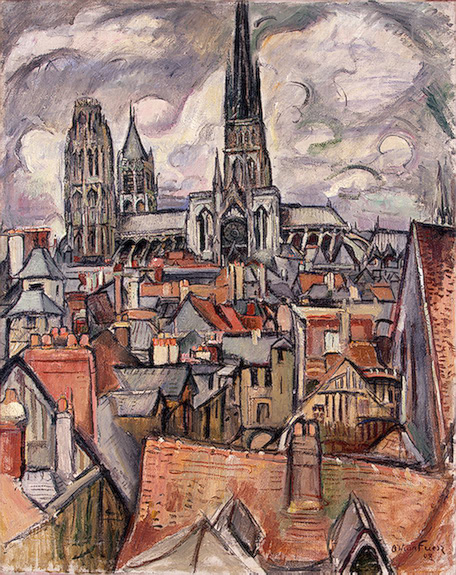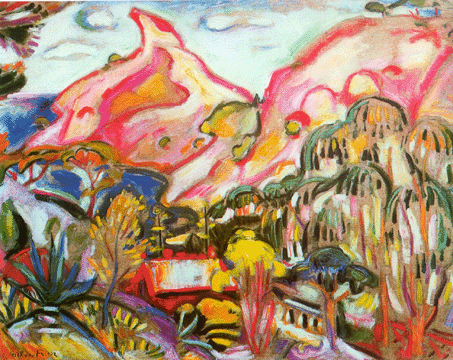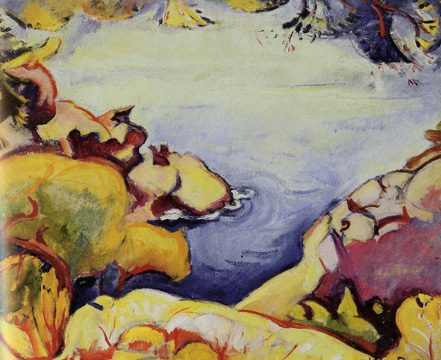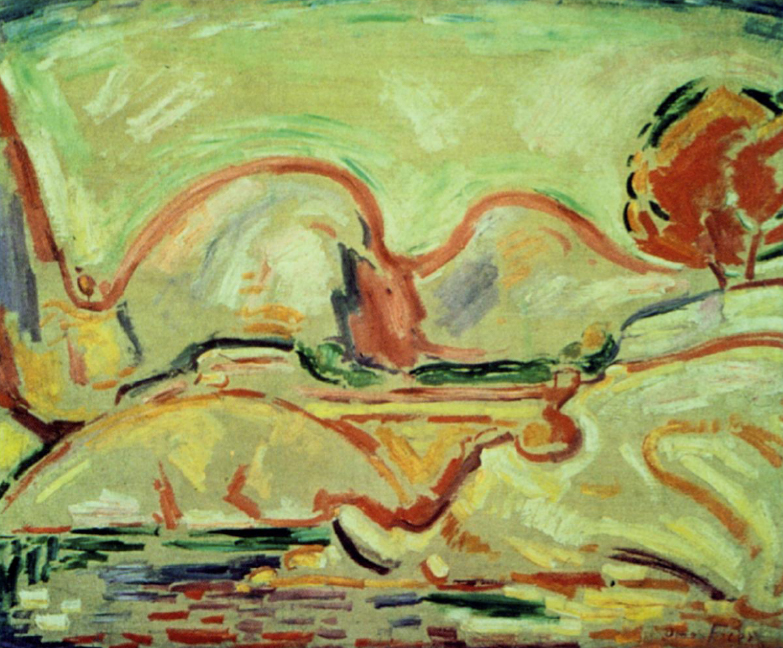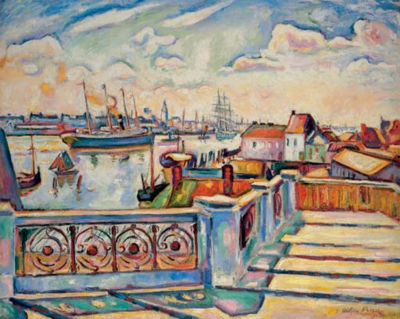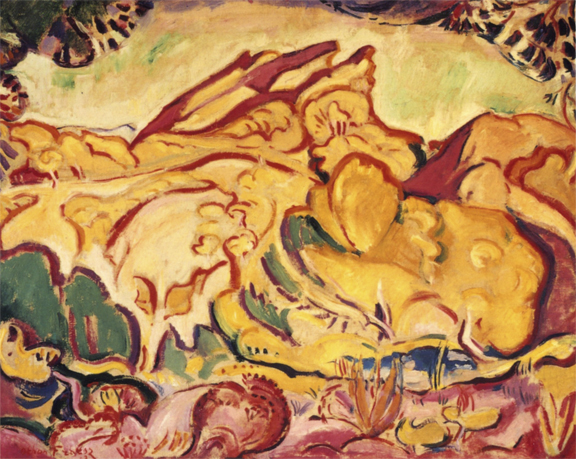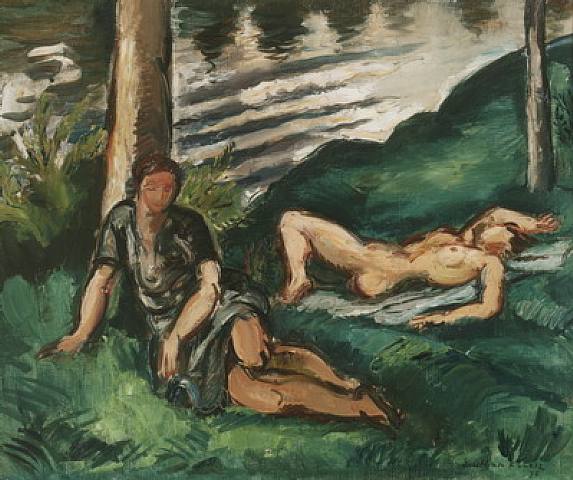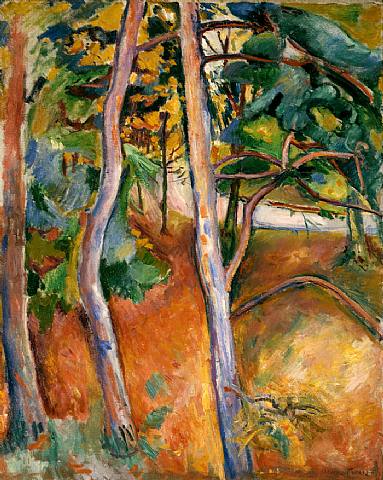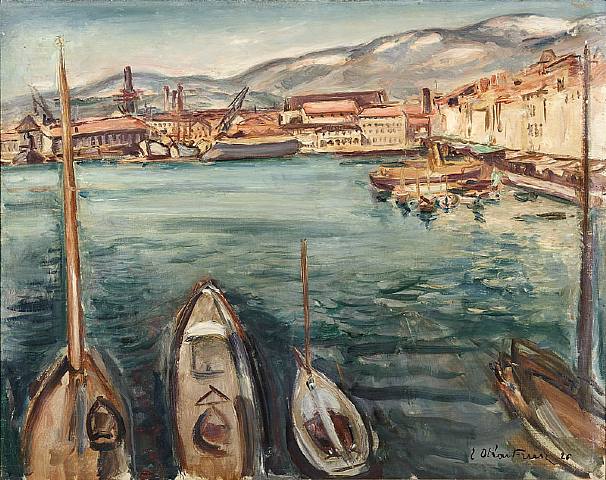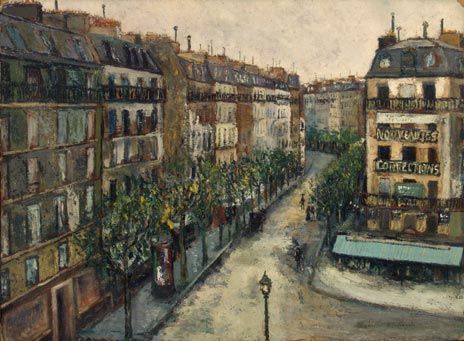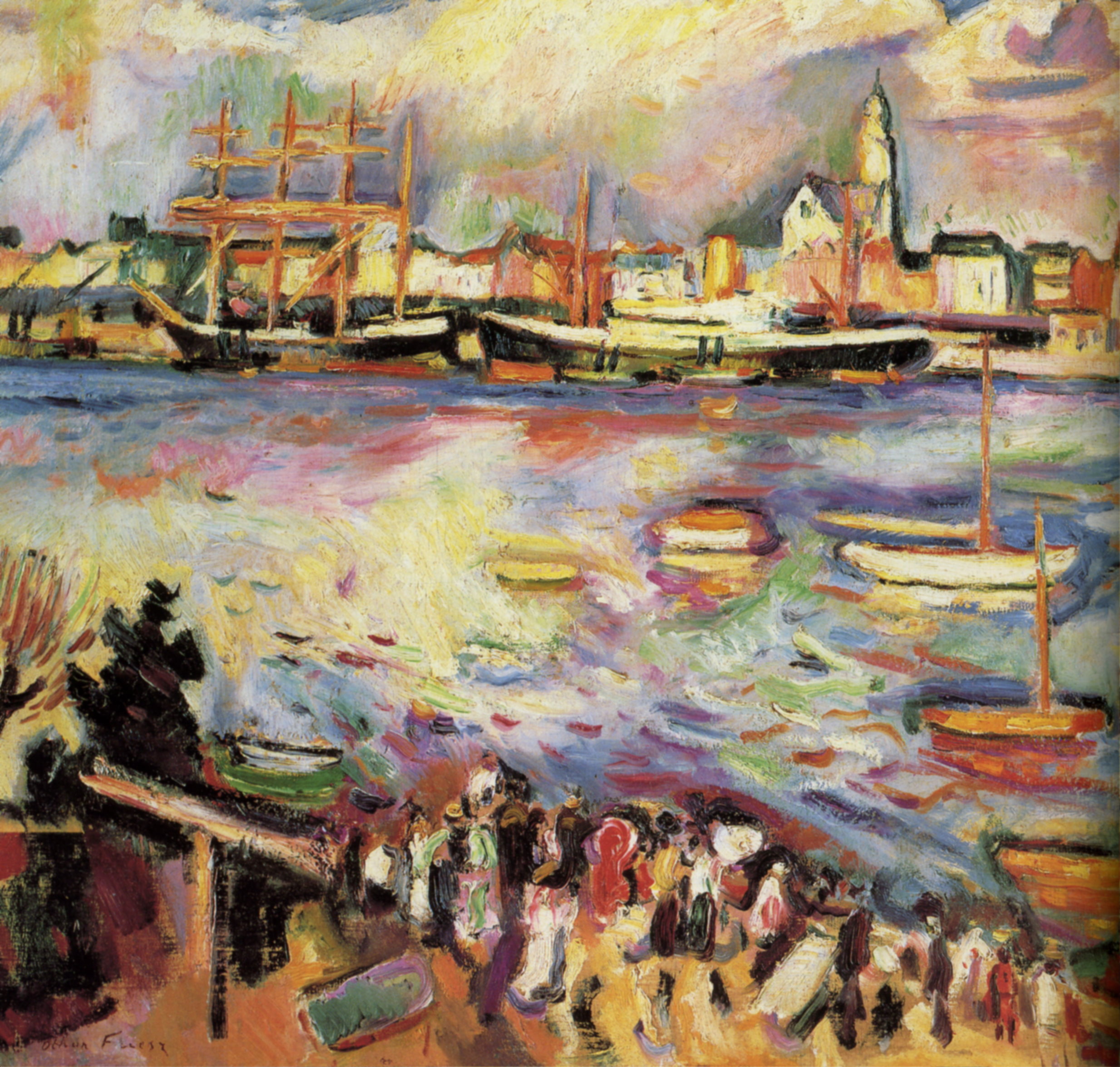<Back to Index>
- Painter Raoul Dufy, 1877
- Painter Achille - Émile Othon Friesz, 1879
PAGE SPONSOR
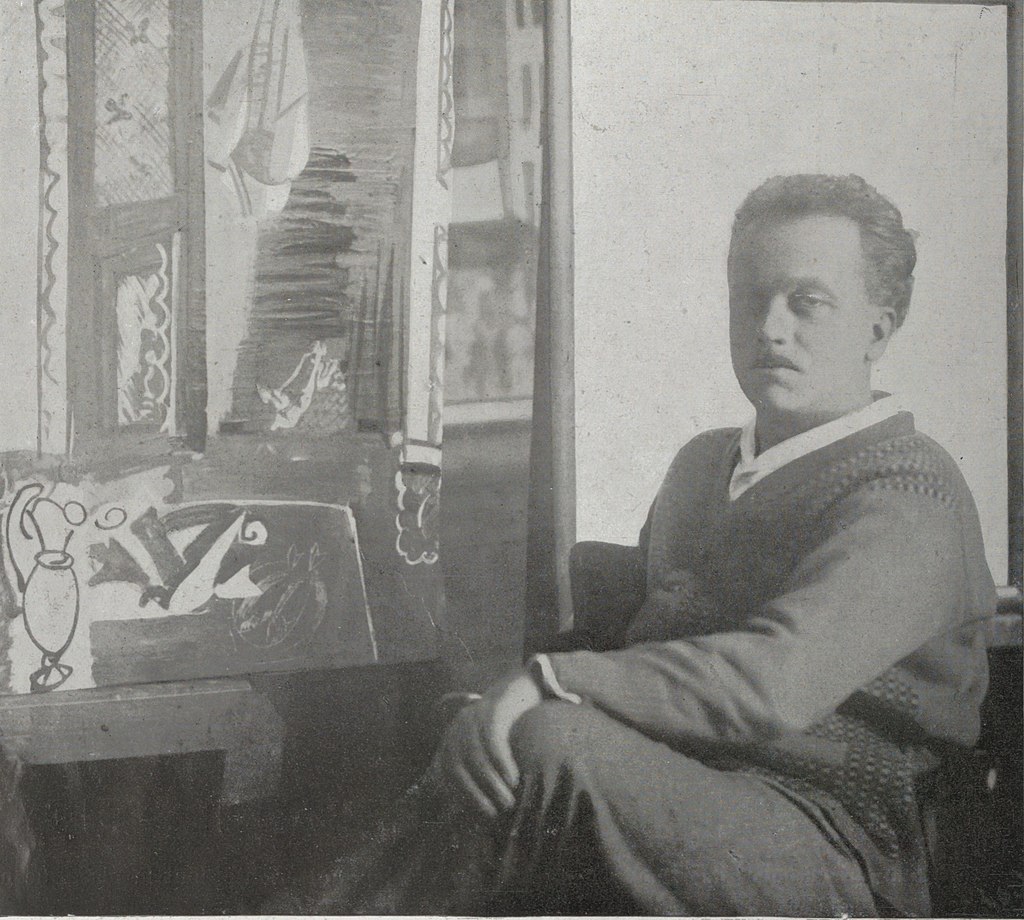
Raoul Dufy (3 June 1877 – 23 March 1953) was a French Fauvist painter. He developed a colorful, decorative style that became fashionable for designs of ceramics and textiles, as well as decorative schemes for public buildings. He is noted for scenes of open air social events. He was also a draftsman, printmaker, book illustrator, a theatrical set dresser, a designer of furniture, and a planner of public spaces.
Raoul Dufy was born into a large family at Le Havre, in Normandy. He left school at the age of fourteen to work in a coffee importing company. In 1895, when he was 18, he started taking evening classes in art at Le Havre's École d'Art (municipal art school). The classes were taught by Charles Lhuillier, who had been, forty years earlier, a student of the remarkable French portrait painter, Ingres. There, Dufy met Raymond Lecourt and Othon Friesz with whom he later shared a studio in Montmartre and to whom he remained a lifelong friend. During this period, Dufy painted mostly Norman landscapes in watercolors.
In 1900, after a year of military service, Dufy won a scholarship to the Ecole Nationale Superieure des Beaux - Arts
in Paris, where again he crossed paths with Othon Friesz. (He was there
when Georges Braque also was studying.) He concentrated on improving
his drawing skills. The impressionist
landscape painters, such as Claude Monet and Camille Pissarro,
influenced Dufy profoundly. His first exhibition (at the Exhibition of
French Artists) took place in 1901. Introduced to Berthe Weill
in 1902, Dufy showed his work in her gallery. Then he exhibited again
in 1903 at the Salon des Independants. A boost to his confidence: the
painter, Maurice Denis, bought one of his paintings. Dufy continued to
paint, often in the vicinity of Le Havre, and, in particular, on the
beach at Sainte - Adresse, made famous by Eugene Boudin and Claude Monet. In 1904, with his friend, Albert Marquet, he worked in Fecamp on the English Channel (La Manche).
Henri Matisse's Luxe, Calme et Volupté, which Dufy saw at the Salon des Indépendants in 1905, was a revelation to the young artist, and it directed his interests towards Fauvism. Les Fauves (the wild beasts) emphasized bright color and bold contours in their work. Dufy’s painting reflected this aesthetic until about 1909, when contact with the work of Paul Cézanne led him to adopt a somewhat subtler technique. It was not until 1920, however, after he had flirted briefly with yet another style, cubism, that Dufy developed his own distinctive approach. It involved skeletal structures, arranged with foreshortened perspective, and the use of thin washes of color applied quickly, in a manner that came to be known as stenographic.
Dufy's cheerful oils and watercolors depict events of the time period, including yachting scenes, sparkling views of the French Riviera, chic parties and musical events. The optimistic, fashionably decorative and illustrative nature of much of his work has meant that his output has been less highly valued critically than the works of artists who have addressed a wider range of social concerns.
Dufy completed one of the largest paintings ever contemplated, a huge and immensely popular ode to electricity, the fresco La Fée Electricité for the 1937 Exposition Internationale in Paris.
Dufy also acquired a reputation as an illustrator and as a commercial artist. He changed the face of local fashion and fabric design with his work for Paul Poiret. He painted murals for public buildings; he also produced a huge number of tapestries and ceramic designs. His plates appear in books by Guillaume Apollinaire, Stéphane Mallarmé and André Gide.
In the late 1940s and early 1950s Dufy exhibited at the annual Salon des Tuileries in Paris. Dufy died at Forcalquier, France, on 23 March 1953, and he was buried near Matisse in the Cimiez Monastery Cemetery in Cimiez, a suburb of the city of Nice.
In 1909, Raoul Dufy was commissioned by Paul Poiret to design stationery for the house, and after 1912 designed textile patterns for Bianchini - Ferier used in Poiret's and Charvet's garments.
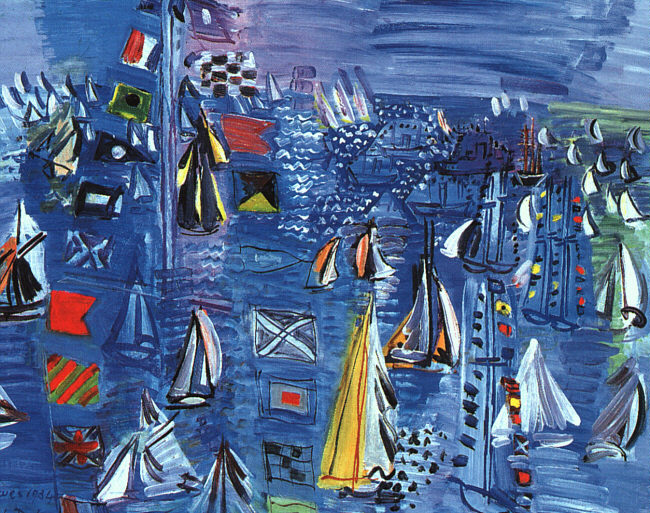
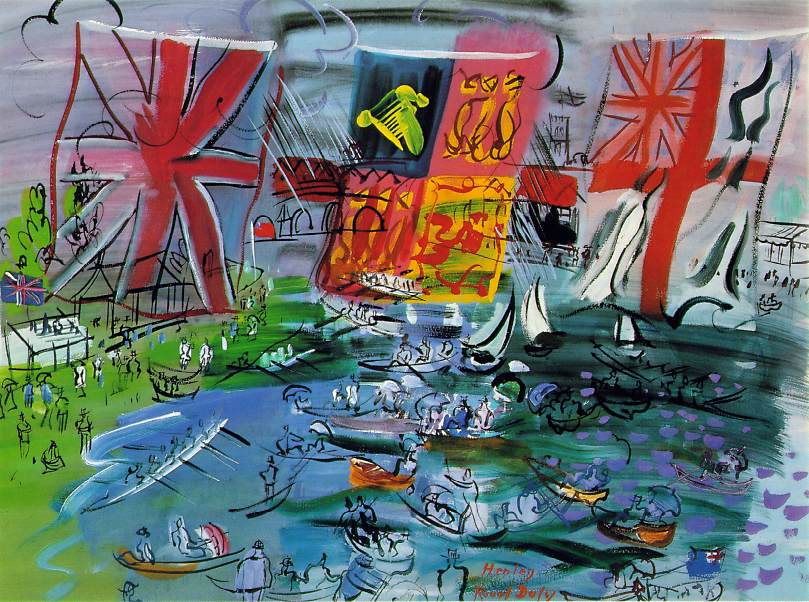
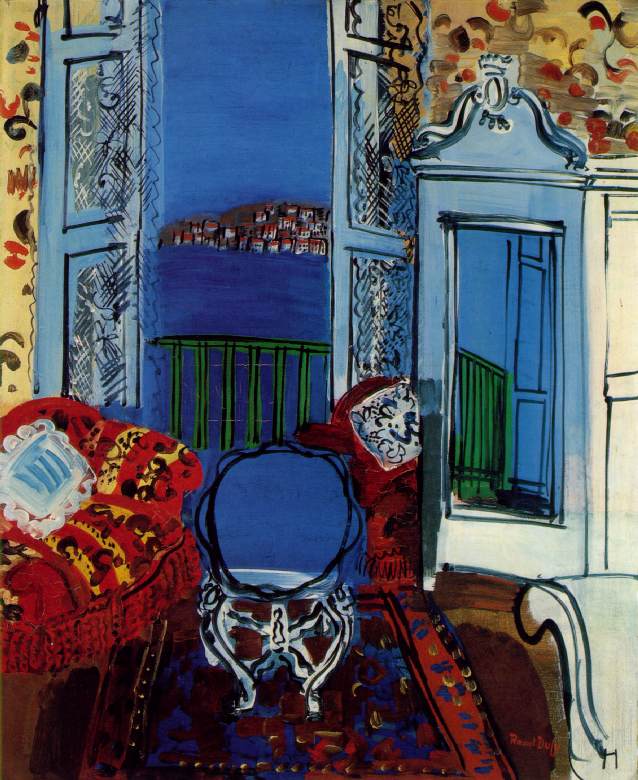
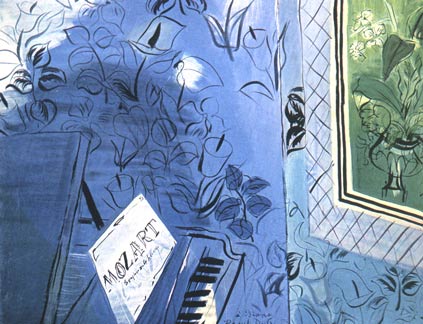
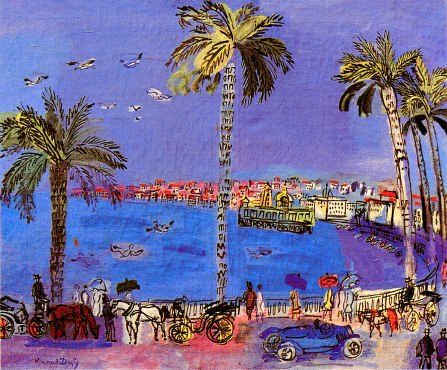
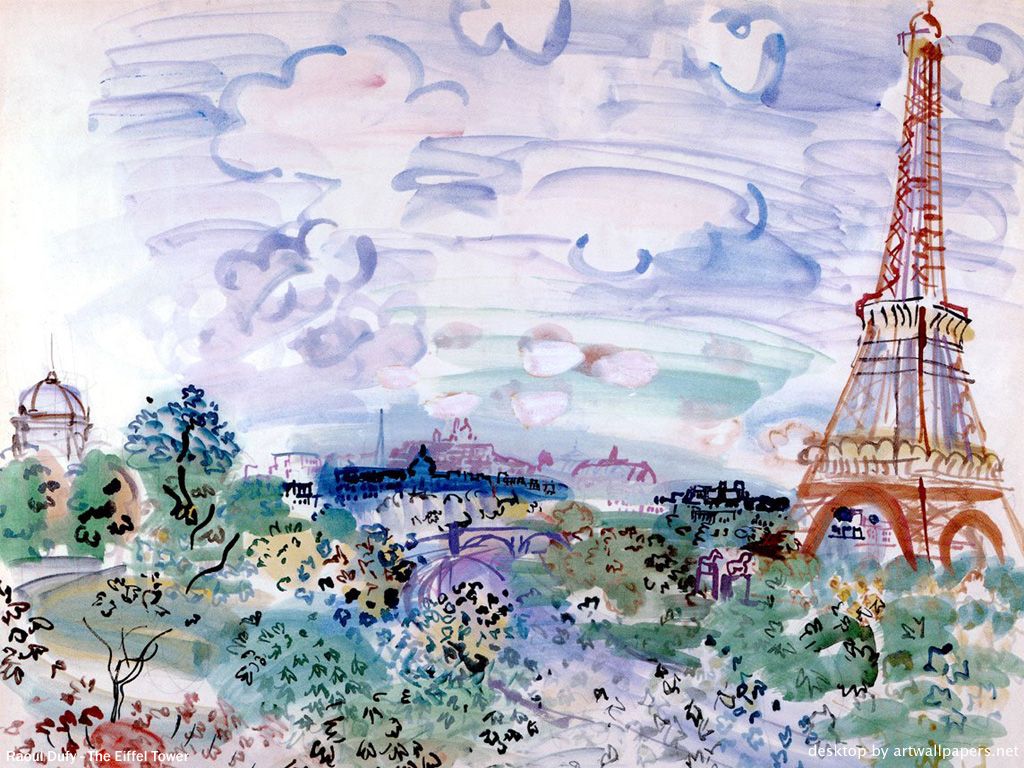
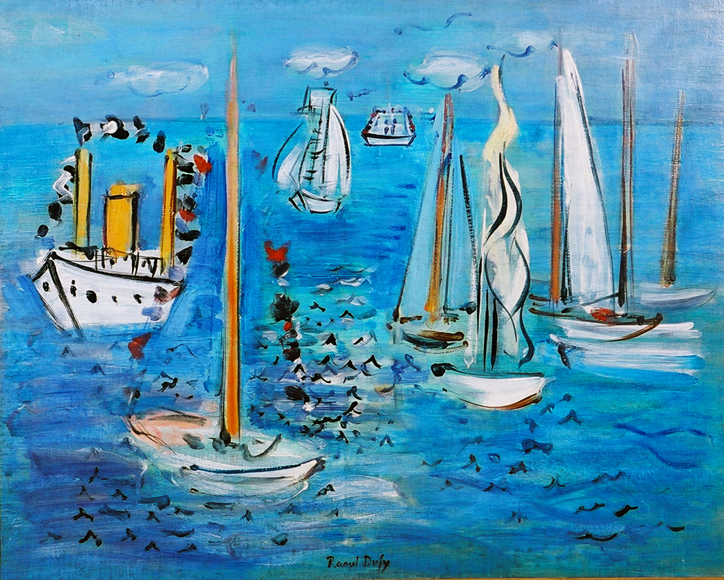
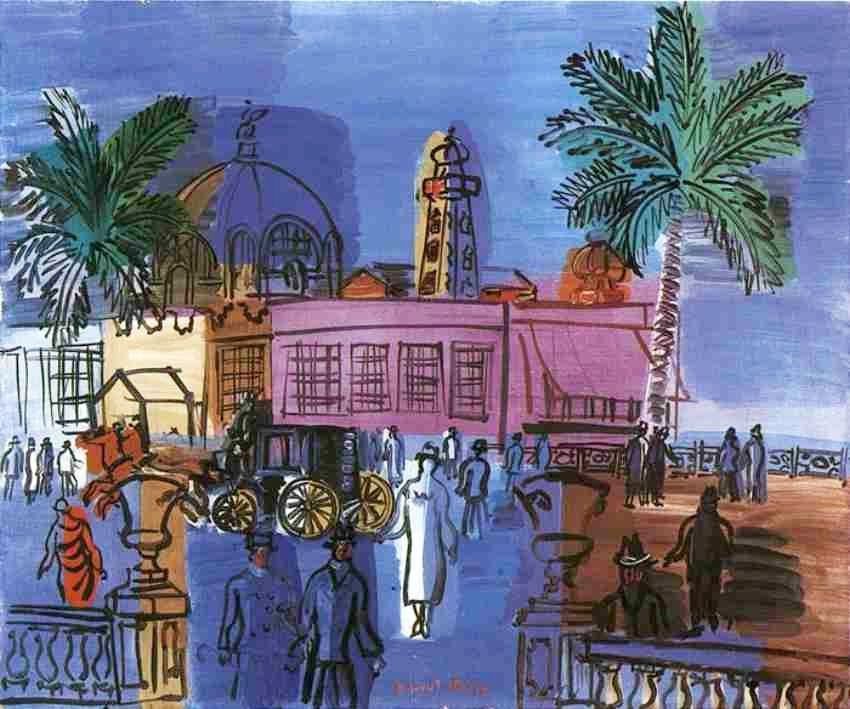
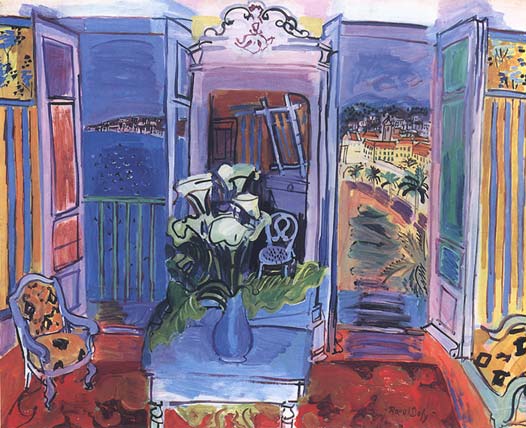
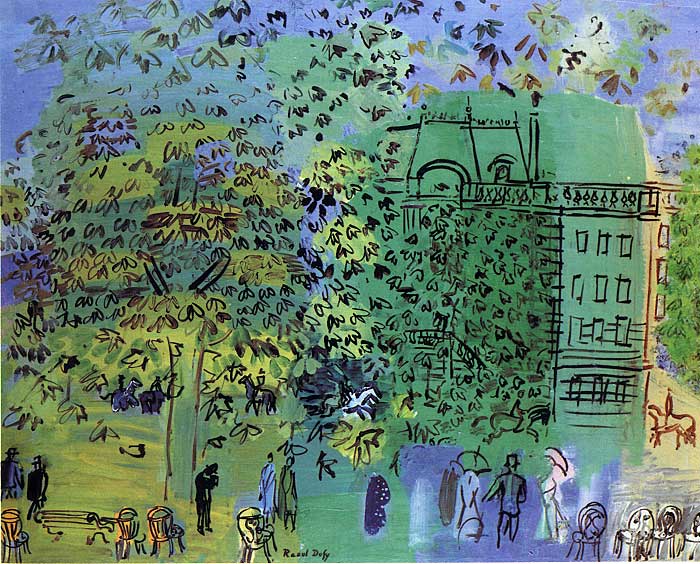
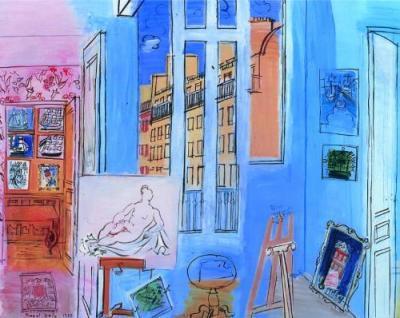
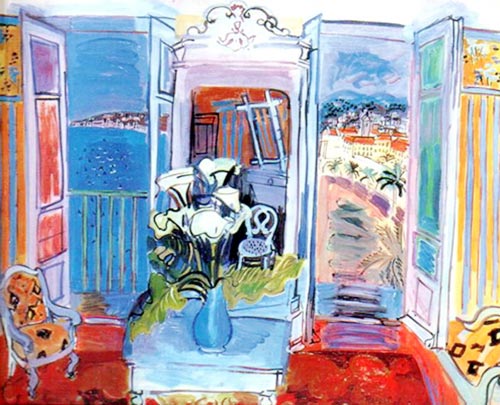
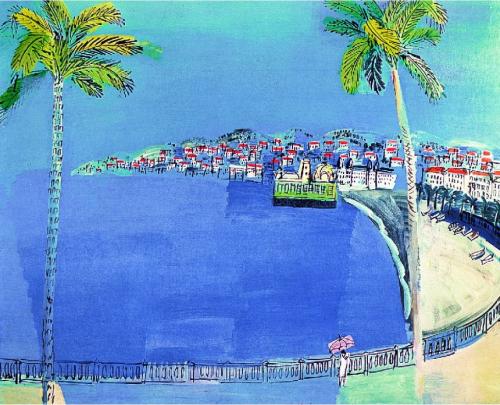
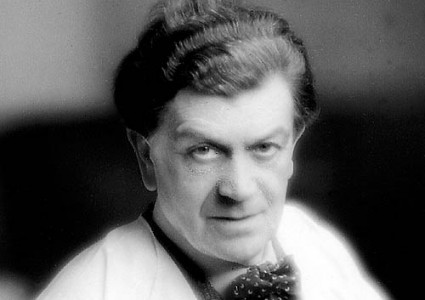
Achille - Émile Othon Friesz who later called himself just Othon Friesz (6 February 1879 - 10 January 1949), a native of Le Havre, was a French artist of the Fauvist movement.
Othon Friesz was born in Le Havre, the son of a long line of shipbuilders and sea captains. He went to school in his native city. It was while he was at the Lycée that he met his lifelong friend Raoul Dufy. He and Dufy studied at the Le Havre School of Fine Arts in 1895 - 96 and then went to Paris together for further study. In Paris, Friesz met Henri Matisse, Albert Marquet, and Georges Rouault. Like them, he rebelled against the academic teaching of Bonnat and became a member of the Fauves, exhibiting with them in 1907. The following year, Friesz returned to Normandy and to a much more traditional style of painting, since he had discovered that his personal goals in painting were firmly rooted in the past. He opened his own studio in 1912 and taught until 1914 at which time he joined the army for the duration of the war. He resumed living in Paris in 1919 and remained there, except for brief trips to Toulon and the Jura Mountains, until his death in 1949.
During the last thirty years of his life, he painted in a style completely removed from that of his earlier colleagues and his contemporaries. Having abandoned the lively arabesques and brilliant colors of his Fauve years, Friesz returned to the more sober palette he had learned in Le Havre from his professor Charles Lhuillier and to an early admiration for Poussin, Chardin and Corot. He painted in a manner that respected Cézanne's ideas of logical composition, simple tonality, solidity of volume and distinct separation of planes. A faint baroque flavor adds vigor to his landscapes, still lifes, and figure paintings.
Othon Friesz died in Paris. He is buried in the Cimetière du Montparnasse in Paris.
